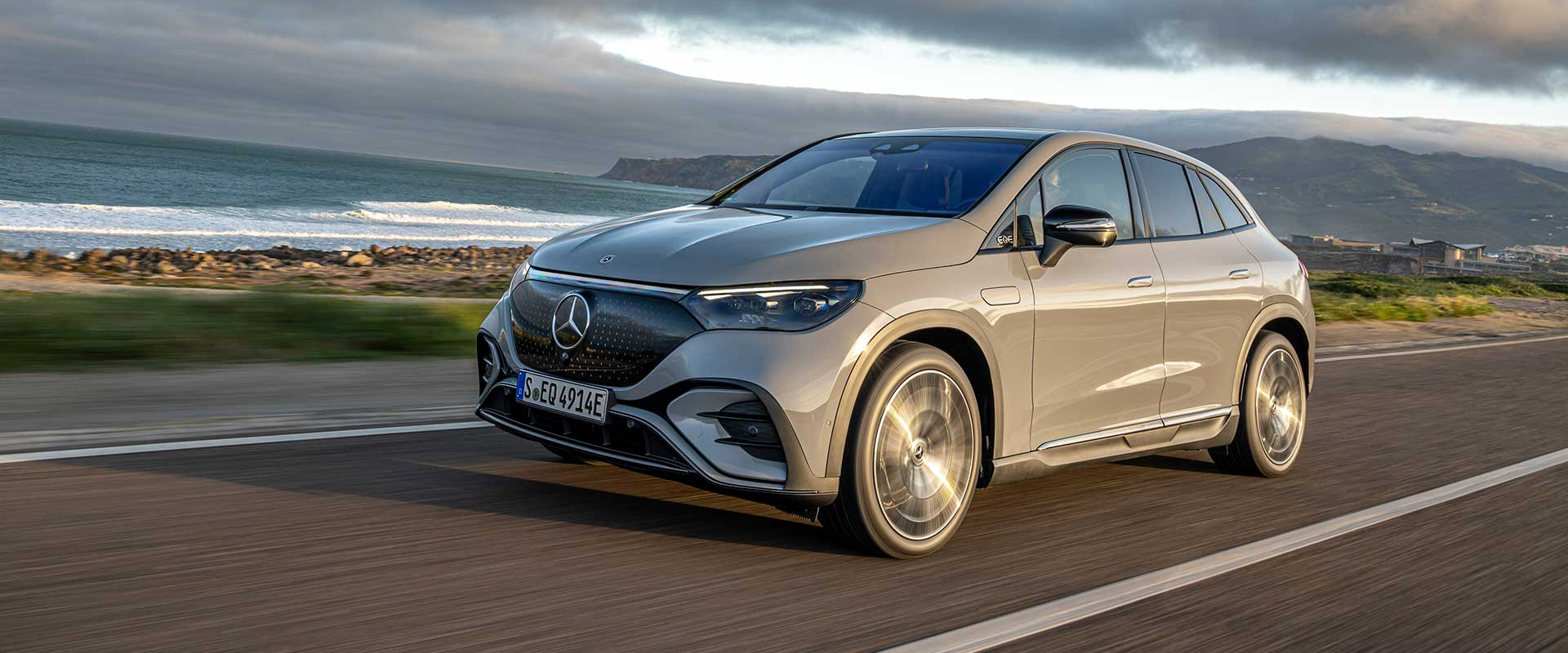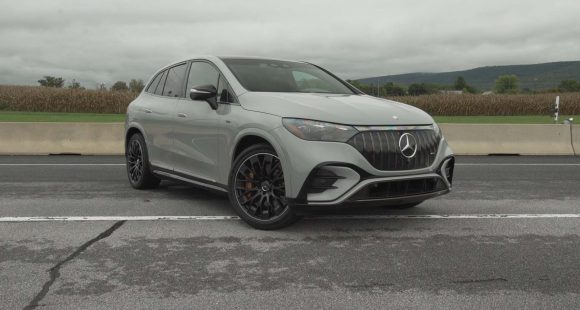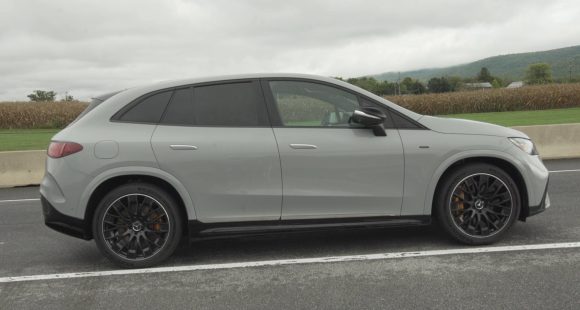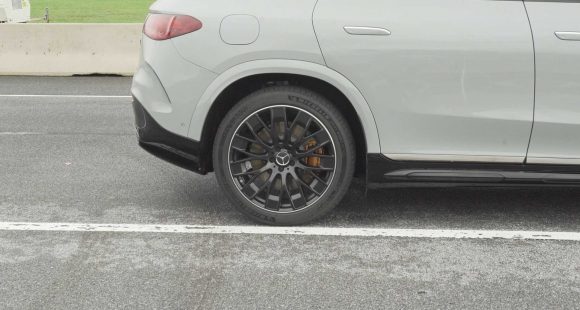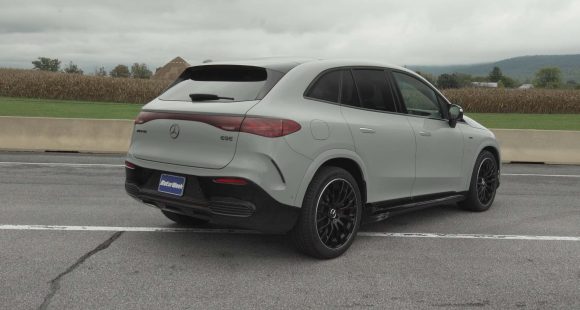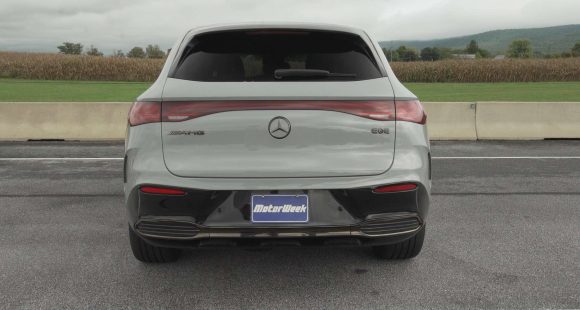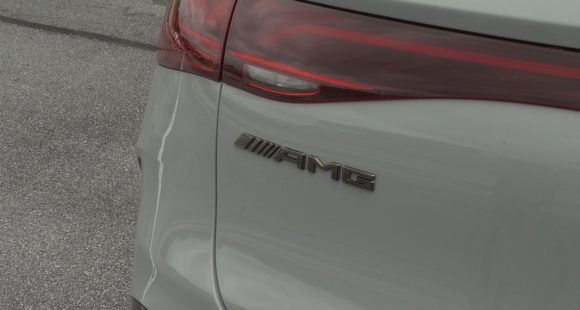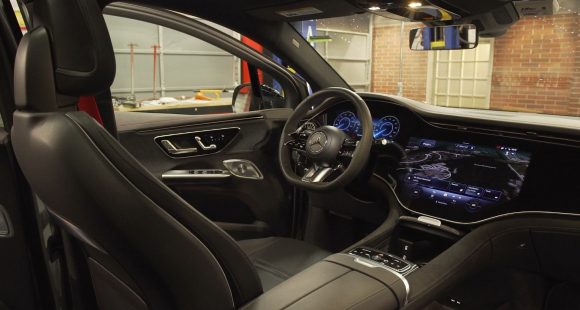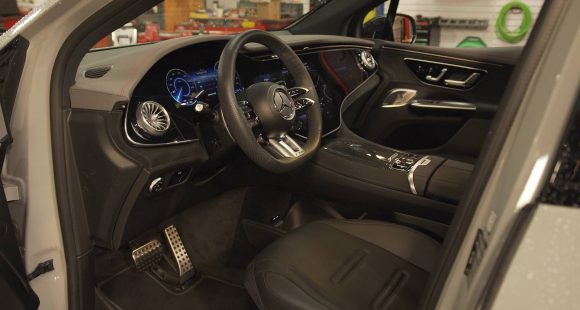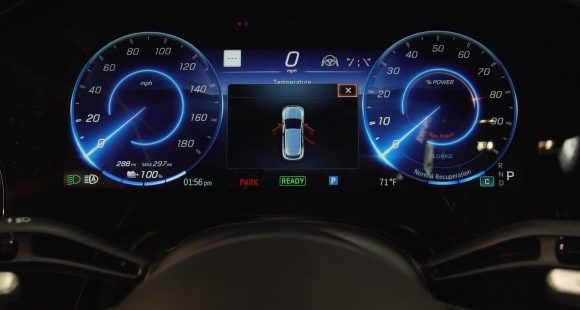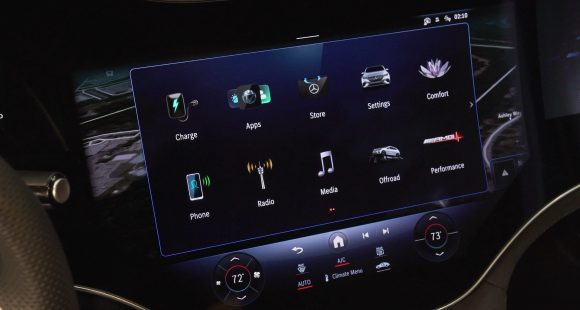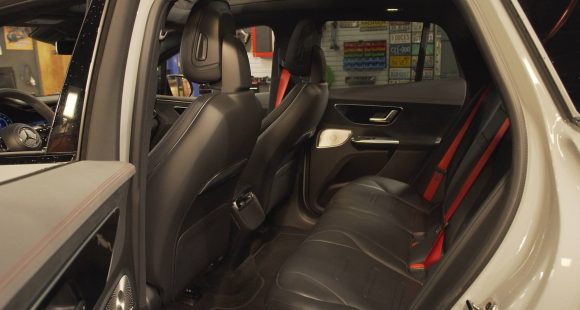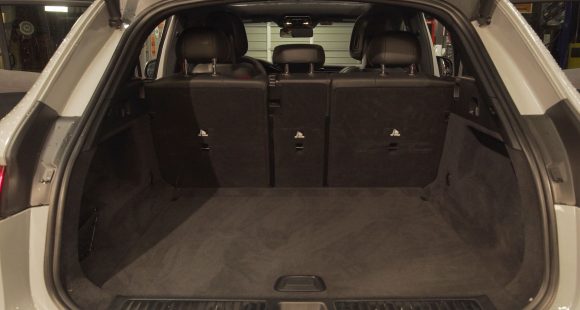2010 Land Rover LR4
While Range Rovers fit for royalty are the most prestigious products from Britain’s Land Rover, it is their rugged mid-size utilities that are most likely to be found in American driveways. Now to keep that loyalty, Land Rover routinely provides major upgrades. The stepped roof Discovery gave way to a more rectangular LR3 for 2005, and now five years in, designers deemed it time for a new engine, new technology, new interior, and a new name. The Land Rover LR4. Let’s see if all this change is a positive move.
You may not notice much of a difference between the 2010 Land Rover LR4 and its predecessor. It retains the LR3’s squared-off, stepped profile, as well as general size. New styling cues are subtle, like a more upscale front end, smoothed out and brought closer to the top drawer Range Rover. Lighting gains the latest fashion, strips of LEDs daytime running lamps.
The LR3’s lone fender port gets a twin on the LR4. The only place the outgoing model’s asymmetrical styling theme continues is the funky notch in the tailgate glass. Our Izmir Blue LR4 came shod with the new 19-by-8-inch alloy wheels. Twenty-inchers are optional.
 But there are bigger changes under the skin. Open the hood to a new all-aluminum 5.0-liter V8 rated at 375 horsepower and 375 pound feet of torque. That’s 25% more horses and 19% more torque than last year’s 4.4 V8.
But there are bigger changes under the skin. Open the hood to a new all-aluminum 5.0-liter V8 rated at 375 horsepower and 375 pound feet of torque. That’s 25% more horses and 19% more torque than last year’s 4.4 V8.
The only transmission is an upgraded ZF six-speed automatic with sport manual mode. We found it to be well-matched to the Rover’s added power. Shifts are smooth and satisfying.
Off-roading is at the core of Land Rover DNA, and the LR4 is the most intrepid vehicle in the Land Rover’s U.S. model range. Revisions to the sophisticated Terrain Response System provide a higher degree of versatility. Sand Launch Control is new, and Rock Crawl can now automatically apply the brakes in precarious low-speed situations.
Our biggest complaints with the LR3 were slow shifts and a lack of power at the top end, but the LR4’s V8 is smooth and torquey across its entire powerband. Zero to 60 is a fine 7.5 seconds, a half better than our last LR3. So, there is ample passing power for broken lines and yellow lights, and plenty of low-end grunt for steep grades.
The LR4’s other notable mechanical bits include a multi-setting electronic air suspension, new chassis components, and bigger brakes. Towing tops out at a capable 7,700 pounds. Our tester’s Heavy Duty Package includes a locking rear diff for when things aren’t going right, and a full-size spare.
We liked the view from the LR3’s airy cabin just fine, but the dash left quite a bit to be desired. For 2010, the center stack and console feature more ergonomically correct controls, and much more pleasant styling.
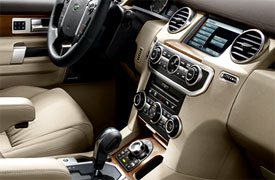 Soft-touch materials are everywhere, from the dash pad, to the stitched multi-function steering wheel, to the leather-rimmed seats. Bolder seat contours make for a more comfortable cabin, too. Gauges remain large and clear, under a deep hood to protect from glare. Our HSE Plus adds satellite navigation, along with three-row, seven-passenger seating.
Soft-touch materials are everywhere, from the dash pad, to the stitched multi-function steering wheel, to the leather-rimmed seats. Bolder seat contours make for a more comfortable cabin, too. Gauges remain large and clear, under a deep hood to protect from glare. Our HSE Plus adds satellite navigation, along with three-row, seven-passenger seating.
We like the raised position of the second row split bench, although there could be more legroom. The third row, however, is hard to get to and really only suitable for small children.
One of the design features that gives the LR4 such off-road prowess is a short rear overhang. But that also limits luggage space. Open the split hatch for only 9.9 cubic feet behind the third seat. Fold it down for a more respectable 42.1 cubic feet, with a class competitive 90.3 after all seats are down.
Less respectable are Government Fuel Economy ratings of only 12 city and 17 highway on premium gas. The new V8 is just as thirsty as the old one. But, according to Land Rover, tailpipe emissions now meet ULEV2 regulations.
Still, the LR4’s Energy Impact Score is very high, 24.5 barrels of oil consumed annually, and leaves a 13.1-ton Carbon Footprint wherever it goes. Those numbers are the same as the Mercedes-Benz GL550, which doesn’t soften the environmental blow at all.
Yet given all it’s attributes and luxury, the base LR4 well priced at $48,100. That’s over $35 grand less than the GL550. Even the higher featured HSE at $51,750, and top-shelf LUX at $57,665, look good by that measure.
Land Rover’s new 5.0-liter V8 is a much better match for the LR4’s mass, and for 2010, Terrain Response is a good thing made better. That, plus a host of other improvements really do make the LR4 worthy of a new name, despite appearances. The LR4 upholds the Land Rover heritage well, adding more refinement and comfort, without losing any of its off-road moves.
Specifications
- Engine: All-aluminum 5.0-Liter V8
- Horsepower: 375
- Torque: 375 Lb Feet
- 0-60 MPH: 7.5 Seconds
- EPA: 12 MPG City/ 17 MPG Highway
- Energy Impact: 24.5 Barrels Oil/Yr
- CO2 Emissions: 13.1 Tons/Yr
2024 Mercedes-AMG EQE
AMG EQE SUV OMG TSNF YOLO LOL
We all know that cranking up the performance in a battery-electric vehicle is a much different and much simpler process than the methods used over the last 100 years of internal-combustion powertrains. So, let’s see how AMG has adapted to this brave and very fast new world with the Mercedes-AMG EQE SUV.
This 2024 Mercedes-AMG EQE is the first all-electric performance SUV from the motoring masterminds at AMG. Starting with the same EQ platform that underpins the brand’s S- and E-class based all-electric sedans and utilities, AMG replaces the EQE 500 4MATIC SUV’s motors with AMG specific units both up front and in back. These specially built motors have unique windings, adapted inverters, and upgraded cooling; all so more current can flow, producing a new total of 617 horsepower and 701 lb-ft of torque.
While the midsize EQE SUV doesn’t feel overly large to drive, it does have an incredibly solid, almost tank-like presence to it, weighing in at just shy of 6,000 lbs. Yet, standard rear-axle steering helps it behave quite nimbly, and it accelerates like a vehicle half that weight, pushing you back in the seat with authority whenever you go all in on the accelerator pedal. An extended period of Mid-Atlantic rain kept us from getting track numbers, but Mercedes claims 0-60 in 3.4 seconds. We’d say that’s conservative given Race Start with Boost Function unlocks an additional 60 horsepower.
Likewise, as in previous Mercedes EVs we’ve tested, it overachieved when it came to battery range as well. With the official rating of the AMG EQE SUV at 235 miles, we plotted a 200-mile road trip, and still had 21% of battery remaining at the end of it, putting our range estimate closer to 254 miles. Max DC fast charging for the 90.6-kWh battery, which is the same battery used in the EQE 500, is perhaps not as high-performance as the rest of the vehicle. At 170 kW, it takes about 15 minutes to add 100 miles of range. Though when driving, the regen braking setup can feed power back at a rate of 260 kW. Our tester’s optional ceramic brakes were plenty strong, if a little touchy around town. There’s also active braking that likes to initiate regen before you actually touch the pedal when you’re coming up on another vehicle or approaching an intersection.
Nobody does interiors like Mercedes-Benz, and we’re not just talking about the luxurious quality of the leather and carbon fiber materials. There’s the wow factor of the dash-wide Hyperscreen, and cool aspects too, such as the turbine-like air vents. That’s before you even get to looking around at the AMG specifics like the Performance Steering Wheel, Dynamic Select Drive Modes, and even the unique AMG Sound Experience coming through the Dolby Atmos surround sound system with speakers seemingly everywhere.
It’s not all glitz and glamour though, as there are multiple thoughtful storage locations throughout the cabin, and good cargo hauling abilities too. The 18.4 cu-ft of space in back and max capacity of 59.2 cu-ft with rear seatbacks folded might just be the ticket to convincing your significant other into letting you make this oh so sensible purchase. Rear seat passengers of this five-seater will appreciate their own luxurious space, with comfortable seating, adequate leg and headroom, and multiple charging ports.
There’s nothing that screams high-performance on the outside of this EQE SUV, as AMG details are mostly subtle, though stacking both of the available AMG Night Packages adds lots of gloss black trim and dark chrome accents. There are three different 21-inch wheel patterns to choose from, as well as available 22s.
Most of the AMG goodness lies deep within, like performance-tuned fully variable 4MATIC+ all-wheel drive that adjusts torque distribution 160 times per second based on drive mode and chassis sensor info. Likewise, AMG Ride Control+ air suspension with adaptive damping and active roll stabilization is constantly monitoring road and driving conditions, along with driver input, adjusting the suspension accordingly, and delivering vastly different driving experiences spread across multiple drive settings from Comfort to Sport+.
Using 46 kWh of electricity per 100 miles, the AMG EQE SUV earns a fair efficiency rating. Pricing starts at $110,750; certainly not out of line for any high-performance vehicle these days, much less one with a Mercedes Star plus an AMG badge.
You could argue that when Mercedes-Benz made the EQ leap into full battery-electric vehicles, they prioritized precision over passion. Well, there’s a healthy dose of both here in this 2024 Mercedes-AMG EQE SUV. Now, we may just be a little lightheaded from experiencing all of the performance that’s packed into this midsize utility, but this is easily our favorite Mercedes EV we’ve driven yet; and that kind of makes sense considering AMG had a big hand in creating it.
Specifications
As Tested
- Motor Setup: Dual Motor
- Battery Size: 90.6-kWh
- Horsepower: 617
- Torque: 701 lb-ft
- EPA Range: 235 miles
- MW Test Loop: ~254 miles
- Peak Charging Rate: 170-kW







